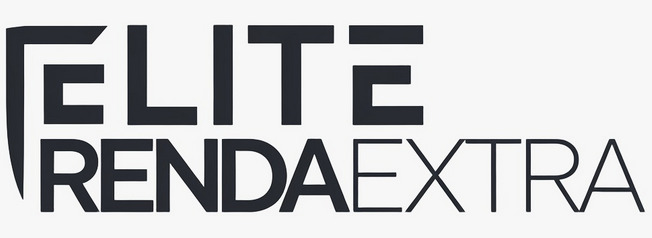Navigating the world of personal finance can sometimes feel complex, especially when considering options like personal loans. These financial tools can be incredibly useful for a variety of needs, offering a pathway to manage expenses or fund significant purchases.
Understanding the landscape of personal loans in the USA, from interest rates to the application process, is key. This knowledge empowers you to make informed decisions that align with your financial goals and circumstances.
Understanding Personal Loans in the USA
Grasping the fundamentals of personal loans is the first step towards making an educated choice for your financial needs in the United States.
What Exactly is a Personal Loan?
A personal loan is a sum of money borrowed from a financial institution, such as a bank, credit union, or online lender. Unlike a mortgage or auto loan, it’s typically unsecured, meaning it doesn’t require collateral like your house or car. You repay the loan, plus interest, in fixed monthly installments over a predetermined period, known as the loan term. These loans are versatile and can be a practical solution for various financial situations.
Common Uses for Personal Loans
Personal loans offer flexibility and can be used for a wide array of purposes. Some common applications in the US include:
- Consolidating higher-interest debts, like credit card balances, into a single, potentially lower-rate payment. This can simplify your finances and possibly save you money on interest.
- Financing home improvements or repairs that can enhance your living space or increase your property’s value.
- Covering unexpected medical expenses or other emergency costs that arise suddenly.
- Funding significant life events, such as weddings, educational pursuits, or even adoption expenses.
- Making a large purchase, like an appliance or furniture, that you might not have the immediate cash for.
Secured vs. Unsecured Personal Loans
While most personal loans are unsecured, secured options do exist. An unsecured personal loan is granted based on your creditworthiness and income, without needing to pledge an asset as collateral. This is the most common type. A secured personal loan, on the other hand, requires collateral, such as a savings account, certificate of deposit (CD), or sometimes a vehicle. Secured loans might offer lower interest rates or larger loan amounts due to the reduced risk for the lender, but you risk losing the collateral if you default on payments. Understanding this distinction is important based on your risk tolerance and available assets.
Navigating Personal Loan Rates
The interest rate on a personal loan is a critical factor, as it directly impacts your monthly payments and the total cost of borrowing over the life of the loan.
Factors Influencing Your Interest Rate
Several elements play a role in determining the rate you’re offered by lenders. These often include:
- Credit Score: This is often the most significant factor. A higher credit score (e.g., a good FICO score) generally signals lower risk to lenders, often resulting in more favorable, lower interest rates.
- Income and Employment History: Lenders want assurance you have the means to repay the loan. Stable income and a consistent employment history can positively influence your rate and loan approval.
- Debt-to-Income Ratio (DTI): Your DTI compares your total monthly debt payments to your gross monthly income. A lower DTI suggests you have more disposable income to handle new debt, which is generally preferred by lenders.
- Loan Amount and Term: The amount you wish to borrow and the length of time you choose to repay it (the loan term) can also affect the interest rate. Sometimes, shorter terms might secure lower rates, but result in higher monthly payments.
- Market Conditions: Broader economic factors and the current interest rate environment can also influence the rates lenders offer.
Understanding APR (Annual Percentage Rate)
When comparing loan offers, it is essential to look at the Annual Percentage Rate (APR). The APR includes not only the interest rate but also any additional fees associated with the loan, such as origination fees or administrative charges. This gives you a more comprehensive and accurate view of the loan’s true cost, making it a better metric for comparison than the interest rate alone.
Fixed vs. Variable Rates
Most personal loans in the USA come with fixed interest rates. This means your interest rate and, consequently, your monthly payment amount remain the same throughout the entire loan term. This predictability can make budgeting easier and protect you from potential rate increases. Some lenders might offer variable rates, which can fluctuate based on changes in a benchmark interest rate (like the Prime Rate). While variable rates might start lower than fixed rates, they carry the risk of increasing over time, potentially making your payments less predictable.
How to Find Competitive Rates
Shopping around and comparing offers from different types of lenders (banks, credit unions, online lenders) is crucial to finding competitive rates. Many online lenders allow you to check your potential rate through a pre-qualification process. This usually involves a soft credit inquiry, which typically does not impact your credit score, allowing you to see estimated terms before committing to a full application.
The Path to an Easy Application Process
While applying for any loan might seem daunting, many lenders, particularly those operating online, have significantly streamlined their personal loan application processes. Understanding the typical steps involved can make the experience feel much more manageable and less intimidating.
Preparing for Your Application
Before you start filling out applications, a little preparation can go a long way in ensuring a smooth process. It’s wise to:
- Check Your Credit Report: Review your credit report from all three major bureaus (Equifax, Experian, TransUnion) for any errors or inaccuracies. You’re entitled to a free report from each annually via AnnualCreditReport.com. Knowing your credit standing helps you gauge your chances.
- Gather Necessary Documents: Lenders will typically require proof of identity (like a driver’s license or passport), proof of address, proof of income (recent pay stubs, W-2 forms, tax returns if self-employed), and bank account information for verification and funding. Having these ready can speed things up considerably.
- Determine How Much You Need and Can Afford: Borrow only what you truly need and, more importantly, what you can comfortably repay each month without straining your budget.
Typical Steps in the Application Process
The application journey for a USA personal loan usually follows these general stages:
- Pre-qualification: Many lenders offer a pre-qualification step. You provide basic financial information, and the lender gives you an estimate of the loan amount and interest rate (APR) you might qualify for. This usually involves a soft credit check.
- Formal Application: If you decide to proceed with a lender after pre-qualification, you’ll complete a full application. This involves providing more detailed personal and financial information and consenting to a hard credit inquiry.
- Verification: The lender will verify the information you’ve provided. This may involve requesting supporting documents like pay stubs or bank statements to confirm your income, employment, and identity.
- Approval and Offer: If your application is approved, you’ll receive a formal loan offer. This document will detail the loan amount, APR, loan term, monthly payment, and any associated fees. Review this carefully.
- Funding: Once you review and accept the loan offer (often by e-signing documents), the funds are typically disbursed. This can be a direct deposit into your bank account, sometimes within one to a few business days, depending on the lender.
Tips for a Smoother Application Experience
To help ensure a hassle-free process, always provide accurate and complete information on your application. Double-check all your entries before submitting. Being responsive to any lender requests for additional information or clarification can also help expedite the review and approval process.
Key Considerations Before Taking a Loan
A personal loan can be a helpful financial tool, but it’s a significant commitment involving regular payments over several months or years. Careful consideration before proceeding is essential to ensure it’s the right move for your financial health.
Assessing Your Financial Situation
Before borrowing, take an honest and thorough look at your current budget and overall financial picture. Can you comfortably afford the new monthly loan payments without straining your ability to cover other essential expenses and savings goals? Consider your existing debts and financial obligations. It’s important that the loan solves a financial problem or meets a genuine need, not creates a new one due to over-extension.
Reading the Fine Print: Loan Terms and Conditions
Always thoroughly review the entire loan agreement before signing any documents. Pay close attention to the interest rate (APR), the loan term (repayment period), the exact monthly payment amount, and any specific conditions, covenants, or penalties. Understanding these details fully can prevent unwelcome surprises down the line. Don’t hesitate to ask the lender for clarification on anything you don’t understand.
Potential Fees to Be Aware Of
Beyond the interest rate that contributes to the APR, personal loans can come with various fees. It’s important to be aware of these potential costs:
- Origination Fees: Some lenders charge an origination fee, typically a percentage of the loan amount (e.g., 1% to 8%), to cover the cost of processing the loan. This fee is often deducted from the loan proceeds before you receive the funds.
- Late Payment Fees: If you miss a payment due date or your payment is late, you’ll likely incur a late fee.
- Prepayment Penalties: While less common for personal loans these days, some loans might have a penalty if you pay off the loan balance early. It’s good to confirm if this applies, especially if you anticipate being able to pay it off ahead of schedule.
- Insufficient Funds (NSF) Fees: If an automatic payment is scheduled and it’s returned due to insufficient funds in your bank account, you may be charged an NSF fee by the lender and potentially by your bank as well.
Improving Your Chances of Approval
While loan approval is never guaranteed, there are proactive steps you can take to strengthen your application and improve your odds of getting approved for a personal loan with favorable terms.
Building a Strong Credit Profile
Your credit history and credit score are cornerstones of most loan applications. Focus on consistently paying all your bills on time, every time, as payment history is a major factor in credit scoring. Keep your credit utilization low, especially on revolving credit like credit cards – ideally below 30% of your available credit limit on each card and overall. Avoid opening too many new credit accounts in a short period, as this can lead to multiple hard inquiries. Regularly checking your credit report for errors and disputing them if necessary can also be beneficial.
Demonstrating Stable Income and Repayment Ability
Lenders look for borrowers who have a reliable and sufficient source of income to make loan payments consistently. A stable employment history and an income level that can comfortably cover the new loan payment, alongside your existing financial obligations (as reflected in your debt-to-income ratio), are key. If you’re self-employed or have variable income, be prepared to provide thorough documentation, such as recent tax returns and bank statements, to demonstrate your earnings.
Choosing the Right Lender and Loan Amount
Different lenders have different eligibility criteria, risk appetites, and may cater to borrowers with varying credit profiles. Researching lenders and understanding their typical borrower profile can help you apply to those where you have a better chance of approval. Credit unions, for example, may sometimes offer more flexible terms or lower rates to their members. Also, applying for a loan amount that aligns with your financial capacity, rather than overextending, can improve approval odds.
Taking the time to understand the nuances of personal loans in the USA, from how rates are determined to what makes an application process smoother, can significantly impact your borrowing experience. By being well-informed about factors like APR, loan terms, and the importance of your own financial preparedness, you position yourself to navigate the lending landscape more effectively.
Ultimately, a personal loan should serve as a constructive financial solution. Careful research, honest self-assessment of your repayment capacity, and a clear understanding of all associated responsibilities are fundamental to making a choice that supports your long-term financial well-being and helps you achieve your goals.



